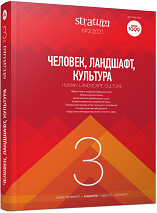Приозерное поселение начала эпохи железа в уральской тайге
Lakeside Settlement of the Beginning of the Iron Age in the Ural Taiga
Author(s): Victor A. Borzunov, Olga N. Korochkova, Vladimir I. StefanovSubject(s): History, Archaeology, Ancient World
Published by: Издательский дом Stratum, Университет «Высшая антропологическая школа»
Keywords: Trans-Urals; mountain-forest zone; Early Iron Age; seasonal lakeside settlements; archaeological cultures;
Summary/Abstract: The article presents the characteristics of the multi-temporal settlements that existed in the 8th—3rd centuries BC on the ruins of Shaitanskoe Lake II, a unique sanctuary of the beginning of the Bronze Age in the vicinity of the village Neivo-Rudyanka, Sverdlovsk Region. This is the first most fully investigated (1149 sq. m) site of the early Iron Age of the mountain-forest Trans-Urals, located on a low lakeside terrace. The ceramic and tool complexes of the Gamayun culture, descendants of the taiga tribes of Western Siberia, who came from the north, as well as the communities of the local Itkul’ and heterogeneous Iset’ cultures, characterize the inhabitants of the settlements as settled fishermen and hunters who were familiar with the basic producing economy (livestock maintenance, copper foundry). The absence of long-term stationary dwellings and a powerful cultural layer is typical for ancient seasonal summer camps and villages. The presence of a small amount of ceramics from Gorokhovo and Baitovo cultures documents forced relocation of a part of the population from the Tobol region into the Trans-Ural taiga in the 5th—3rd centuries BC, under the pressure of cattle-breeding tribes of the Sargat culture, ancient ancestors of the Hungarians, moving from the Ishim-Irtysh forest-steppe.
Journal: Stratum plus. Археология и культурная антропология
- Issue Year: 2021
- Issue No: 3
- Page Range: 399-422
- Page Count: 24
- Language: Russian
- Content File-PDF

